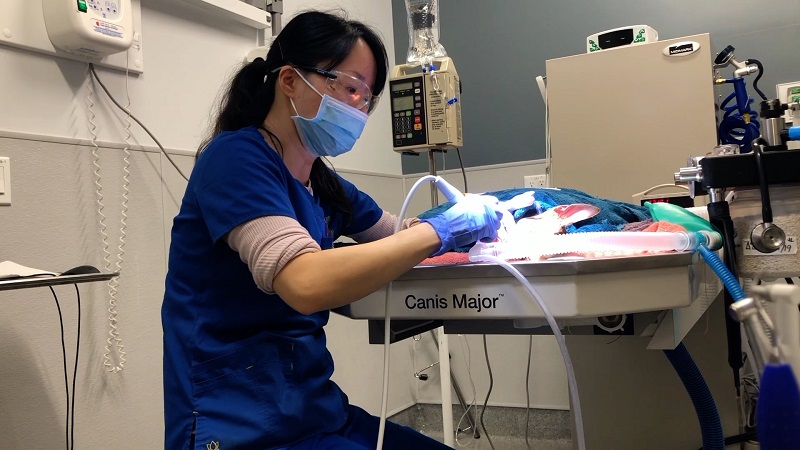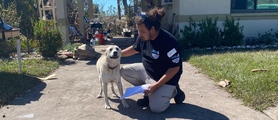February is Pet Dental Health Month!

February is Pet Dental Health Month, which is a great time to remind pet owners of the importance of dental care!
Imagine how you would feel if you skipped brushing your teeth for months and never saw the dentist. Not only would your mouth feel unhealthy, but you probably wouldn’t have many teeth left in your old age! Because dental health is so important to our overall wellbeing, preventable infections and diseases might even cut your life short.
Unfortunately, this is often the reality for many pets, simply because some pet owners do not know about proper dental care for cats and dogs. In honor of February being Pet Dental Health Month, San Diego Humane Society is offering tips to help people take care of their pets’ dental health and help them live longer, healthier lives!
Dental disease is caused when bacteria in the mouth solidifies to form plaque on the teeth, which will harden into tartar in 3-5 days if the teeth are not brushed — causing inflammation, bleeding, tooth loss and bad breath. Once tartar forms, it can only be removed by a professional cleaning, much like the cleanings you get from your own dentist. Studies have shown untreated dental disease can even contribute to and worsen heart, liver and kidney disease, making them more expensive and time-consuming to treat. So, it’s in your pet’s best interest — and yours — to pay attention to their dental health!
How Do I Know My Pet Needs Help?
Here are some signs that your pet needs dental help from your veterinarian:
- Dark stains on their teeth
- Redness in their gums
- Foul breath
- Pain when their gums are touched
- Pain when eating
What Can I Do?
There are two keys to maintaining good dental health for your pet:
- Home treatment, including regularly brushing your pet’s teeth at least twice a week. Feeding them a healthy diet and giving them plenty of appropriate chew toys will also help maintain a healthy mouth!
- Professional teeth cleaning as directed by your veterinarian. (Here are resources for discounted pet dental care if you need assistance.)
Never brushed your pet’s teeth before? Not to worry. It’s easier than you think, since pet toothpaste comes in many flavors designed to entice your pet, including the ever-popular “poultry” flavor. To warm up, just let your dog or cat lick a dab of toothpaste. Next, put a small amount of toothpaste on your finger and gently rub a few teeth. Praise your pet for cooperating. Go slowly, brushing a few teeth at a time and pausing to praise your pet, until the entire mouth is brushed. Graduate to using a soft pet toothbrush or finger brush from there; the goal is to brush your pet’s teeth at least every other day.
Brushing your pet’s teeth at home is the best way to keep their mouth healthy, but most pets still benefit from professional cleanings at least once every other year. Your vet or a trained veterinary technician will use special equipment to clean above and below the gum line while your pet is under general anesthesia (because pets won’t sit there and hold their mouths open while someone scrapes and cleans their teeth for 30 minutes). If you’re wondering about non-anesthetic dentistry, often advertised by groomers and others, stay away. Tartar is like an iceberg: most of it is below the surface, underneath the gum. Only an anesthetic dentistry can remove that biggest source of plaque and tartar.
Want to learn more about proper dental care for your pet? Check out our President and CEO Dr. Gary Weitzman’s book published by National Geographic: Complete Guide to Pet Health, Behavior, And Happiness – The Veterinarian’s Approach to At-Home Animal Care.
Published: January 28, 2022








